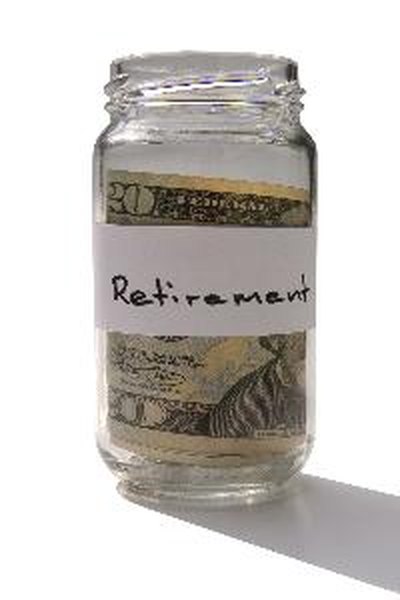Is It Easy to Withdraw Funds From Nomura
The Requirements for Withdrawing Retirement Funds

Most retirement savings accounts are subject to withdrawal requirements.
Glass jar with change and Retirement label image by torben from Fotolia.com
Retirement savings accounts allow your money to grow tax-free until the funds are withdrawn. In most cases contributions are either made pretax or qualify for a tax credit. Deferring taxes on retirement investments can lead to tax savings, since you are often in a lower tax bracket after you retire. Taxes cannot be deferred indefinitely, however; the Internal Revenue Code includes specific requirements for when funds can be withdrawn from retirements accounts as well as when funds must be withdrawn.
Normal Distributions
You can withdraw money from your individual retirement account without penalty once you turn 59 1/2 years old. Prior to that age, a withdrawal would be considered an early distribution, subject to a 10 percent penalty in addition to your normal income tax. The Internal Revenue Service does allow a few hardship exceptions to the early distribution penalty, including financing a first home, certain medical expenses and qualified higher education expenses.
Required Distributions
The IRS will not let you defer taxes on your retirement funds forever. Once you turn 70 1/2, you must begin taking distributions from your accounts. The minimum amount you must withdraw is a percentage of the previous year-end account value, based on your life expectancy. Your first required minimum distribution must be taken by April 1 the year after you turn 70 1/2. For example, if you were born on June 15, 1945, you would turn 70 1/2 on Dec. 15, 2015, and must take your first RMD by April 1, 2016. If you were born on Aug. 15, 1945, you wouldn't turn 70 1/2 until Feb. 15, 2016, and would not be required to take a distribution until April 1, 2017. Subsequent RMDs must be taken by Dec. 31 each year. If you wait until April 1 to take your first RMD, you will need to take your second RMD by Dec. 31 of the same year. If you miss your RMD, the penalty is 50 percent of the required distribution amount. If you have multiple individual retirement accounts, you can take a distribution from one account in an amount equal to the RMDs for all the accounts.
Employer-Sponsored Accounts
Employer-sponsored retirement plans, such as 401(k) or 403(b) accounts, might have different rules for withdrawals. Distributions can begin at age 59 1/2, but if you are still working after you turn 70 1/2 you may not be required to take a distribution from your 401(k) with that employer. Your RMDs would begin on April 1 the year after you retire. Check your plan documents, however, because some plans mandate distributions begin after reaching age 70 1/2 even if you are still employed. If you have multiple employer-sponsored accounts, you must take an RMD from each account; you cannot combine the RMDs as you can for other retirement accounts.
Roth Accounts
An exception to the retirement account withdrawal requirements is the Roth account. Roth accounts are funded with after-tax money, but earnings are generally tax free. Withdrawals of contributions you make to a Roth account are never taxed; earnings may be taxed if the account has been open fewer than five years. There is no minimum withdrawal requirement for Roth accounts while the account owner is alive. Following the death of the account owner, the beneficiaries typically must withdraw the entire amount within five years. A spouse who is the sole beneficiary may elect to treat the Roth account as her own, in which case no distributions are required while the spouse is alive.
Source: https://finance.zacks.com/requirements-withdrawing-retirement-funds-4423.html
0 Response to "Is It Easy to Withdraw Funds From Nomura"
Post a Comment